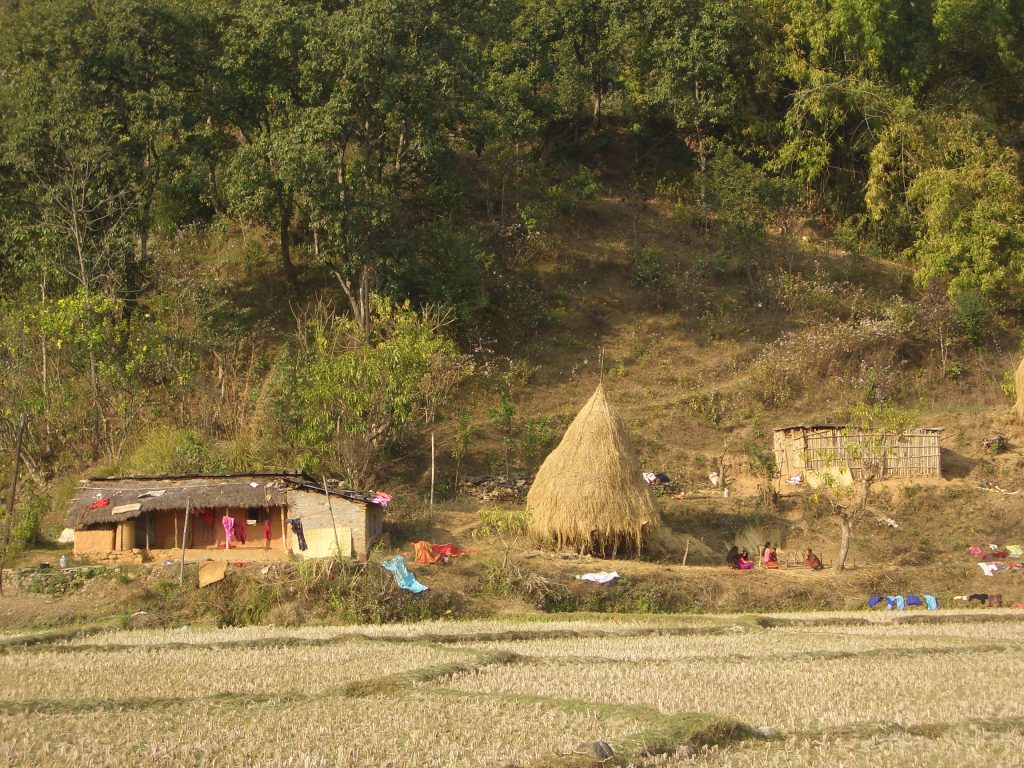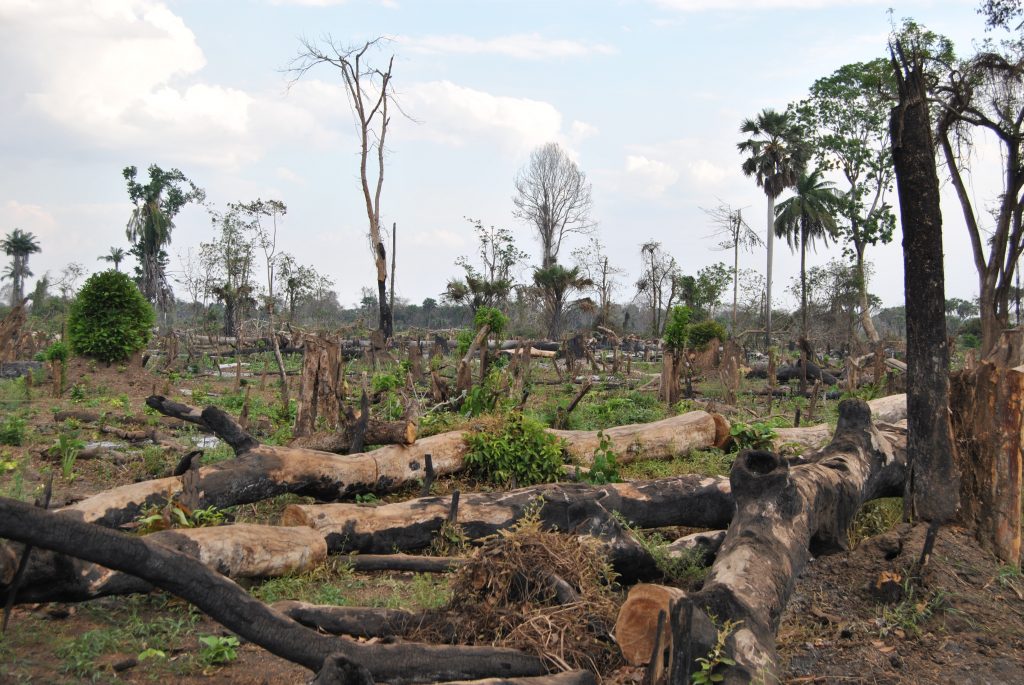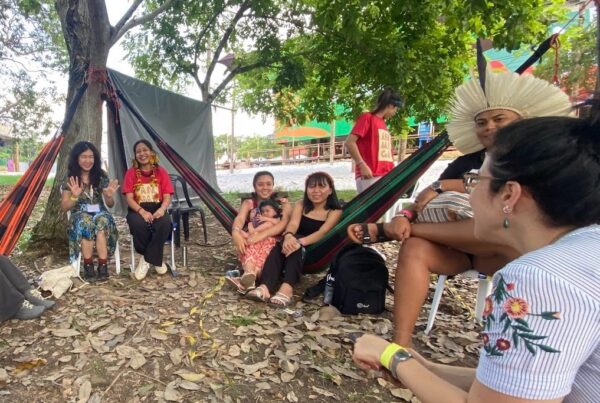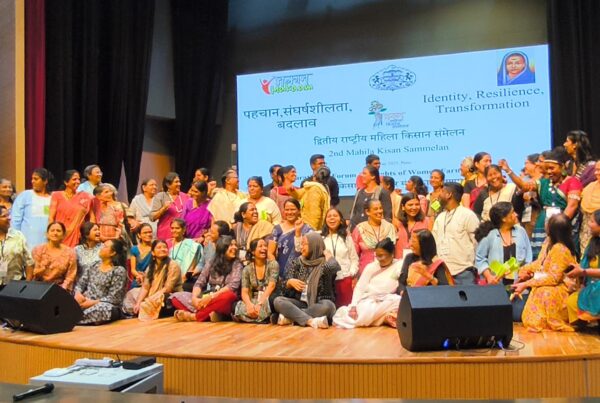By Adeniyi Asiyanbi and Jens Friis Lund
More than a decade of REDD+ initiatives has shown abundant evidence of poor outcomes. Now that forest-based mitigation projects to tackle climate change are gaining traction again, we can learn from the tensions embedded in REDD+ schemes to assess the critical implications of market-based forest governance for effective climate action and climate justice
We are currently observing a global proliferation of programmes and initiatives seeking to mobilize forests and trees for climate mitigation under the broad banners of “Natural Climate Solutions” and “Nature-Based Solutions”.
The current enthusiasm surrounding these seemingly new buzzwords bear resemblance to that which accompanied the flagship initiative Reducing Emissions from Deforestation and Forest Degradation (REDD+) when it emerged on the international development scene a decade and a half ago. REDD+ has, so far, attracted more than 10 billion USD in financial support to transform forest governance and landscapes across the global South, promising to curb deforestation and forest degradation, conserve biodiversity, reduce rural poverty and provide a pathway to green development.
While scholarly work on REDD+ overwhelmingly indicates that the scheme has produced poor results at best, jubilant celebration of ‘progress’, ‘results’ and even ‘success’ continue to circulate among REDD+ proponents. Such praise in turn contributes to the sense of enthusiasm and promise surrounding the newest forest-based mitigation initiatives.
We believe that the tension between the persistence of the promise of forest-based climate change mitigation and the abundant evidence of poor outcomes must be scrutinized not least for its critical implications for effective climate action and climate justice. Based on a recent journal article introducing a special issue on the stabilization of REDD+, we examine this tension under four broad themes: 1) embedding of REDD+ in development-as-usual, 2) market-based orientation of REDD+ framing and operationalization, 3) REDD+ as an irreducibly complex network, and 4) the politics of REDD+ knowledge. Here we briefly provide an overview of the arguments and then discuss the emerging horizon of forest-based climate mitigation more broadly.
REDD+ and development-as-usual
Despite its discursive framing as a market-based scheme, REDD+ was since its inception set firmly within, and driven by, the international development industry, including development banks (e.g. the World Bank), bilateral donor agencies in particular Norwegian NORAD, development consultants and NGOs. These long-standing establishments have lent durability to REDD+. In turn, REDD+ funds, knowledge and governance systems have reinforced the power of this industry. Typical of new fashionable ideas within development, REDD+ was widely marketed early on as a win-win initiative, capable of addressing multiple problems, such as rural poverty, loss of biodiversity and deforestation, at once. It has continued to be touted as a ‘natural’, ‘cheap’ and ‘quick’ means to reduce carbon emissions, despite the reality of actual REDD+ programmes across various contexts. This rhetoric has served to mobilize diverse actors and align REDD+ with various regional and global agendas, including the United Nation’s Sustainable Development Goals (SDGs).
Looking back on the trajectory of REDD+ as one in the historical succession of what some have described as ‘conservation fads’, the continuities with the longer history of conservation and development is striking. Yet, claims of novelty linked to the promises and potentials of REDD+ have created significant expectations around the scheme, which to date remain largely unmet. Not only have REDD+ promises of reducing deforestation and rural poverty been barely realised (if at all), the scheme has also tended to reinforce existing inequalities in the traditional relations, modalities and geographies of international development. This reproduction of an unequal world is observed in the distribution of funds, the concentration of activities and in the prioritisation of countries, regions and organisations. For instance, a report has shown that only 10 countries (out of at least 65 REDD+ participants) account for about 60% (or USD 5.9 billion) of total REDD+ funds. Moreover, studies show that REDD+ funds are not necessarily being allocated to countries with the highest potential to achieve emissions reduction.
Set firmly within the development industry, REDD+ has espoused the financial extravagance that characterizes this industry. Project developers, international consultants and academics have found lucrative labour opportunities in REDD+ irrespective of its outcomes, while forest-dependent communities have continued to shoulder the livelihood burdens and financial risks of project success and failure. Adversely affected communities have often not had access to effective means of redress.
With significant funds sunk into international administration, consultancy and trainings, many subnational and local governments in the global South bear more cost of REDD+ than they receive in REDD+ funds. This pattern is linked to the ways that REDD+ also reflects and reproduces the technical power imbalance in favour of traditional development actors. The complex technical processes needed for ‘REDD+ readiness’ and carbon commodification, such as establishing forest change reference levels and setting up monitoring, evaluation and verification systems, tend to variously exclude local communities and sometimes even policy makers while reinforcing reliance on international technical support. This entrenches the powers of traditional development actors.
All these problems build on a long history of unequal global relations – a history that goes back to the colonial origins, the often-pernicious legacy of which manifest in contemporary forest conservation laws, practices and approaches across many countries of the global South. For instance, REDD+ has failed to break with colonial history of vilifying subsistence livelihood practices of indigenous peoples and local communities. The tendency to categorize local livelihood practices as ‘drivers of deforestation’ taps on this long history to legitimate the often violent exclusion of indigenous and forest communities from forests. Thus, REDD+ fits into and reproduces historical patterns of inequity in international development.

REDD+ often tightens existing restrictions on access to forests by the rural poor. Here landless people living at the forest fringe, Nepal. Photo credit: Jens Friis Lund
Market-based orientation of REDD+ framing and operationalization
The initial framing of REDD+ as a market-based instrument positioned the scheme favourably within the current neoliberal capitalist hegemony. While REDD+ has not arrested global forest loss, it has contributed to legitimizing continued production, consumption and capital accumulation in the global North. For instance, major oil corporations continue oil production while supporting (or claiming to support) REDD+ and other so-called natural climate solutions. Similarly, the aviation industry hinges part of its emissions reduction commitments on REDD+ offsets. From corporate carbon offsetting to impact investment funds seeking to ‘do good’ while making profit, REDD+ persists partly because of its role in legitimating traditional circuits of capital and commodity markets. In these ways, REDD+ may be facilitating the lock-in of emission intensive systems and ‘mitigation deterrence’, which means that at-source emissions reduction get further delayed or reduced as a consequence of considering (generally inefficacious) emissions removal initiatives like REDD+.

Qantas is one of many airline companies offering their customers to offset their flight emissions with a basis in forest conservation projects, photo credit: https://www.qantas.com/au/en/frequent-flyer/partners/fly-carbon-neutral.html
With the aim of leveraging private finance, significant amounts of public donor funds have promoted private control of REDD+ projects, as well as industrial investments in mining, plantation forestry and ‘climate-smart’ agriculture. This is the case for instance for multilateral initiatives such as the BioCarbon Fund and the Forest Carbon Partnership Facility that favour REDD+ programmes with significant (or at least potential for) private investment, including in a range of land-uses that ostensibly contribute to carbon sequestration. As of 2018, around 70% of all REDD+ projects entered into the registry of the major certification company, Verra, involved private sector proponents and for-profit ventures. Though REDD+ agreements and a great deal of funding have been channeled through governments, and the initiative has indeed intensified state control of land and forests in many cases, many countries including the Democratic Republic of Congo and Tanzania have also seen an overwhelming control of projects on the ground by private for-profit ventures and NGOs.
The rather sluggish attempts to financialize REDD+ through bonds, special funds and other market instruments often come with a profit mandate that seek investment returns not merely in carbon offsets sale but in any potential source of value on the landscape including timber, charcoal, minerals, agriculture and land speculation and sale. Against assumptions that REDD+ would discourage large-scale, forest-intensive land uses such as industrial agriculture and extractives investments, there is a sense in which, in reality, REDD+ appears to actively mobilize such investments or at least facilitate a convenient co-existence with them. Meanwhile, many REDD+ projects have reported some form of restriction on local resource access and use.
As such, REDD+ persists in part because it serves to legitimize traditional circuits of market capitalism and offers a convenient socio-ecological fix for a crisis-prone capitalist system seeking to deflect and delay the curtailment of fossil fuel production and use, while finding new avenues for capital accumulation.
REDD+ as an irreducibly complex network
REDD+ is a complex amalgam of policies, ideas, interests and ambition. Its specific manifestations across locales reflect peculiarities that make REDD+ appear ambiguous and malleable. This complexity has posed significant challenges for those seeking to substantiate a generalized critique of the scheme and, thereby, has contributed to its persistence.
REDD+ rests on claims of non-consumptive forms of forest commodification through standard measurement, reporting and verification (MRV). The complex combination of actors, expertise, tools, practices and strategies across scales for producing carbon as a commodity is remarkable. This complexity makes a wide range of processes pass under the banner of REDD+, and contributes to its resilience in the face of criticism and contestation.
Yet, the complexity of REDD+ also reflects the long-standing challenge of demonstrating additionality, i.e. that REDD+ efforts lead to additional emissions reductions as opposed to a ‘without REDD+’ scenario. Attempts at demonstrating additionality rests on typically contested baselines and hypothetical counterfactuals. This challenge is compounded by the virtually intractable nature of local, regional and international leakage – that is, the displacement of economic activities from REDD+ sites to other locations. Added to this comes the relatively overlooked problem of impermanence – i.e. the reversal of emissions reductions as trees burn, fall over in storms or succumb to pests – a problem that will increasingly be exacerbated by climate change. While these fundamental weaknesses of the notion of REDD+ as project-based emissions offsetting are beyond dispute, they remain largely ignored by REDD+ proponents.

Tracing leakage is next to impossible. Recent forest clearing in Southern Tanzania. Perhaps by people displaced by a REDD+ project somewhere else in the country? Photo credit: Jens Friis Lund
Indeed, efforts to address these so-called technical challenges continue to serve as a basis to enrol an ever-wider network of actors including researchers, consultants, critics, NGO employees and policy makers. At the same time, critical researchers, activists and indigenous communities continue to highlight these challenges as well as the overwhelming evidence of adverse impacts of REDD+ across locales. These adverse impacts, which are becoming more visible as case studies from REDD+ locales mature, have occurred in spite of uneven attempts to develop and apply safeguards. The continuous struggle between those contesting various manifestations of REDD+, and those promoting this scheme, shapes its resilience, its iterations and the new forms of forest-based climate mitigation arising in its wake.
Politics of REDD+ knowledge
REDD+ persistence also owes to asymmetries in how REDD+ knowledge is circulated, validated and policed. Unequal relations are manifest not only in the North-South flow of REDD+ standards, safeguards and guidelines, but also in scholarly knowledge production. While REDD+ implementation happens exclusively in the global South, more than half of the REDD+ academic literature is produced by academics based in Europe, Canada and the US. Only 7%, 10% and 20% is produced by academics based in Africa, Latin America and Asia, respectively.
Similarly, the preference for consultants in REDD+ project design and evaluation by funders implies that most REDD+ reports tend to foreground accounts that are favourable to funders and proponents. In several cases, such accounts have ignored instances of forced resettlement. This selective reporting of REDD+ spawns ignorance of the reality of REDD+ impacts.
Similarly, we see dynamics of selective knowledge production and validation within the REDD+ research community. For instance, some scholars continue to argue that research knowledge on REDD+ remains sparse and inconclusive, which ignores the massive body of scholarly evidence of conflict and tension, and poor performance overall. This paradox is partly reflective of epistemological and methodological differences, including a fundamental division over whether studies of REDD+ should emphasize an ever-evasive ‘REDD+ ideal form’ or engage with the multiplicity of ‘REDD+ in practice’. However, it also reflects the positionality of analysts across a practice-oriented leaning towards a more critical stance.
Anticipating the future of REDD+ and forest-based climate mitigation
In spite of a poor track-record, REDD+ persists and is now mobilized and renewed as part of ever-more ambitious forest-based climate mitigation initiatives under the headings of Nature-based Solutions and Natural Climate Solutions.

Old multiple win-win promises are rehashed and expanded under the new heading of Nature-based Solutions, credit: https://iucncemypn.org/2019/12/nature-based-solutions-and-social-cohesion-in-latin-america/
We observe the rehashing of old promises and the enrolment of old and new actors alike. What is different from before is the imagined scale and speed of rollout of conservation, restoration and afforestation, as well as the much more evident and immediate interest from the private sector. Big oil, airlines, food conglomerates, and tech giants are all pledging to invest heavily in ‘nature’ over the coming years. If they do, we might see a resurgence of green grabbing, dispossession and forced resettlements across the global South. Irrespective of what they actually do, the promises and pledges currently circulated add to the delay and deflection of emissions reductions across the global North by holding up a promise of an impending ‘green fix’. A promise that grows alongside the ever-tighter timeline to bring down global emissions. In this sense, REDD+ and the wider promise forest-based climate mitigation is indeed ‘too big to fail’ – as the consequences of facing up to the impossibility of easy and cheap win-win climate mitigation are uncomfortable for many to face up to. Yet, a further delay and deflection of climate mitigation is morally untenable and dangerous. Therefore, we call for intensified scrutiny of the paradoxical persistence of the promises of forest-based climate mitigation – particularly in its new guises – and of the dire consequences they hold for climate justice.
__






4 Comments